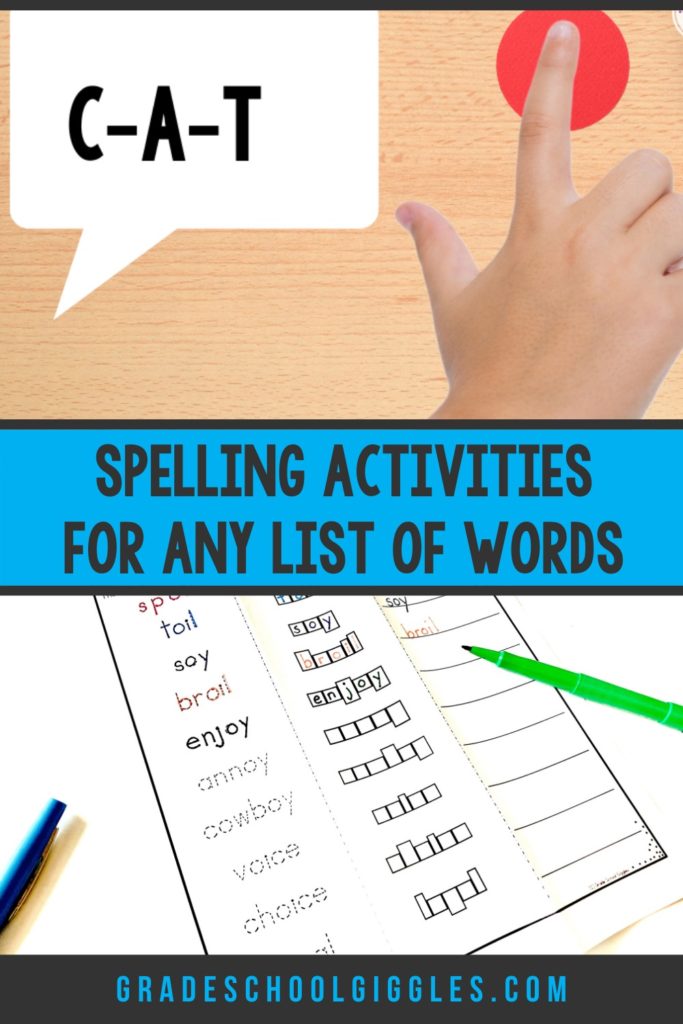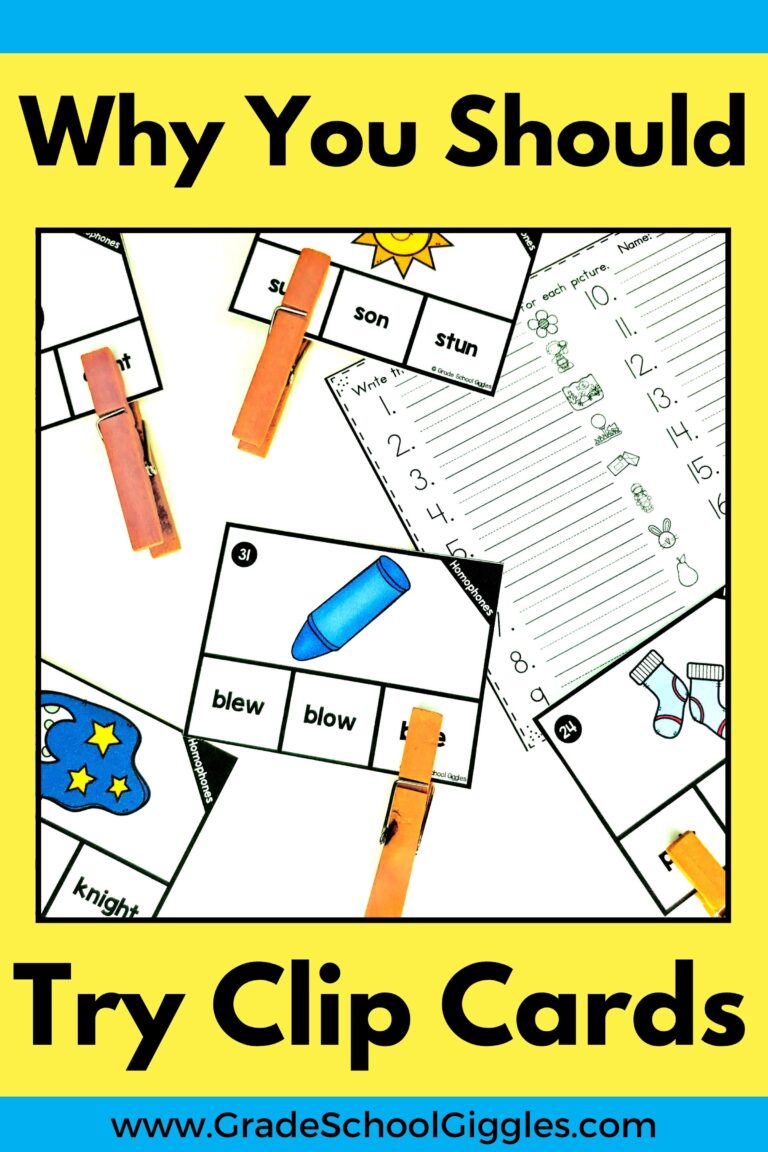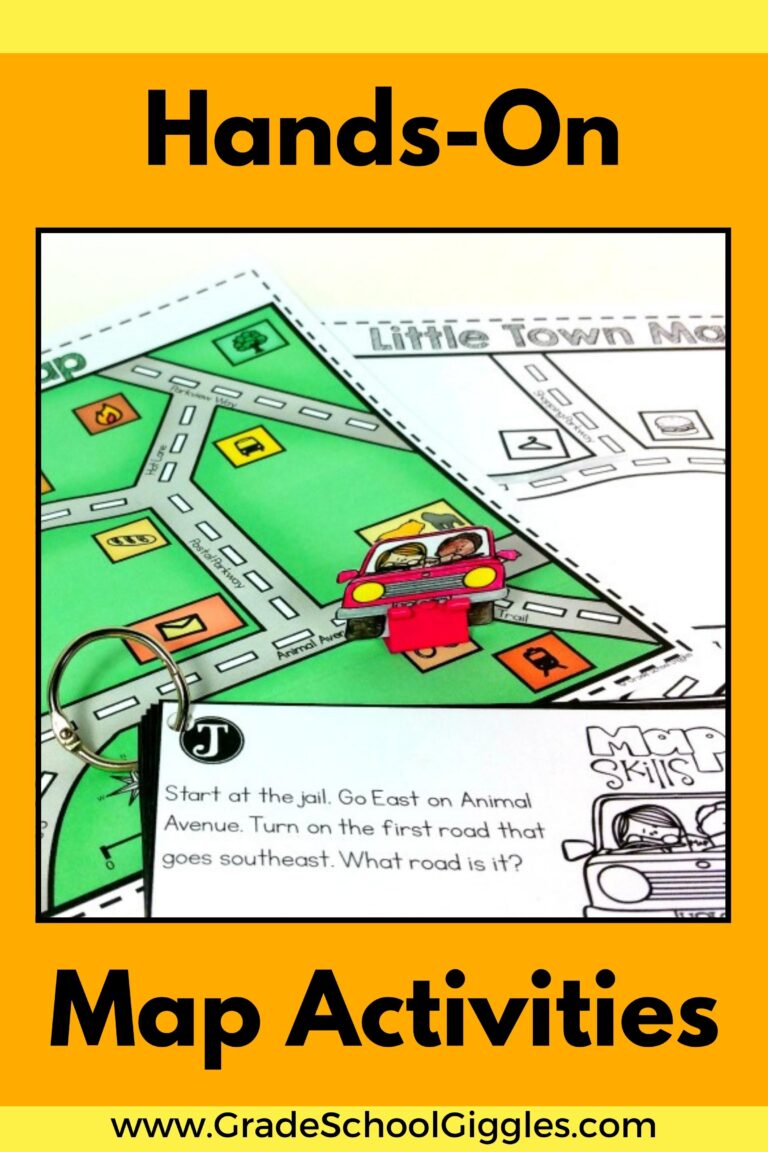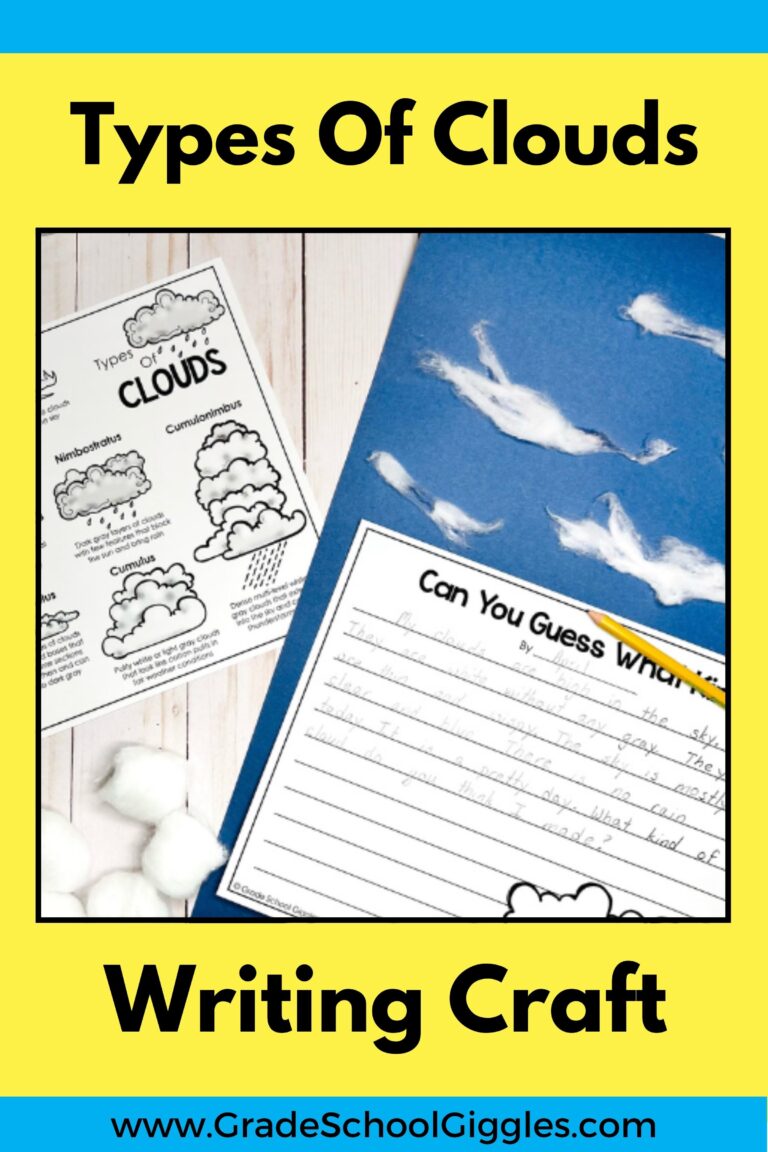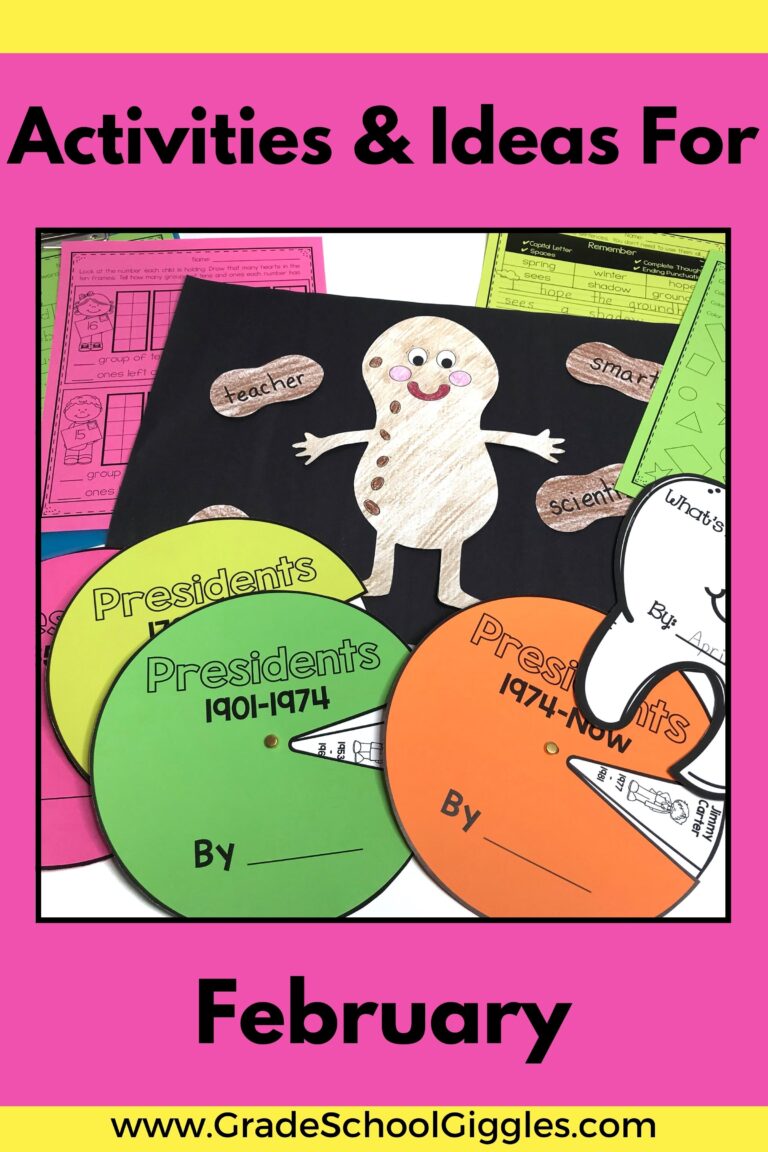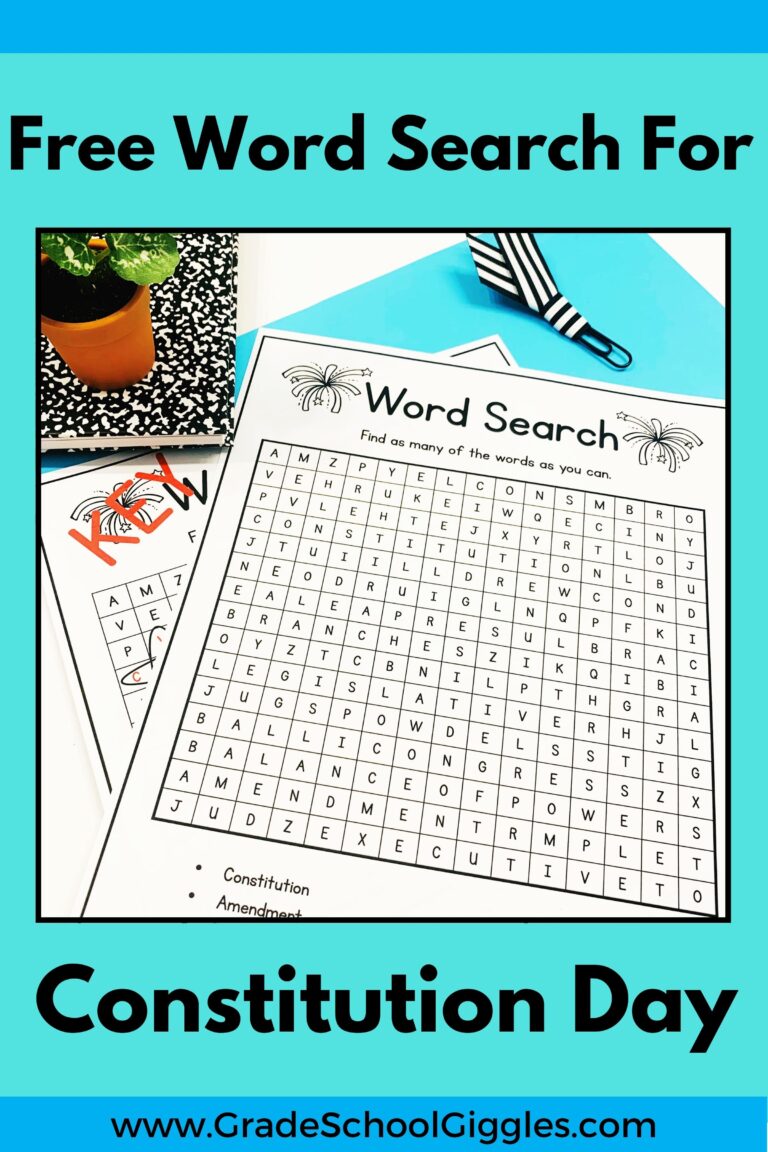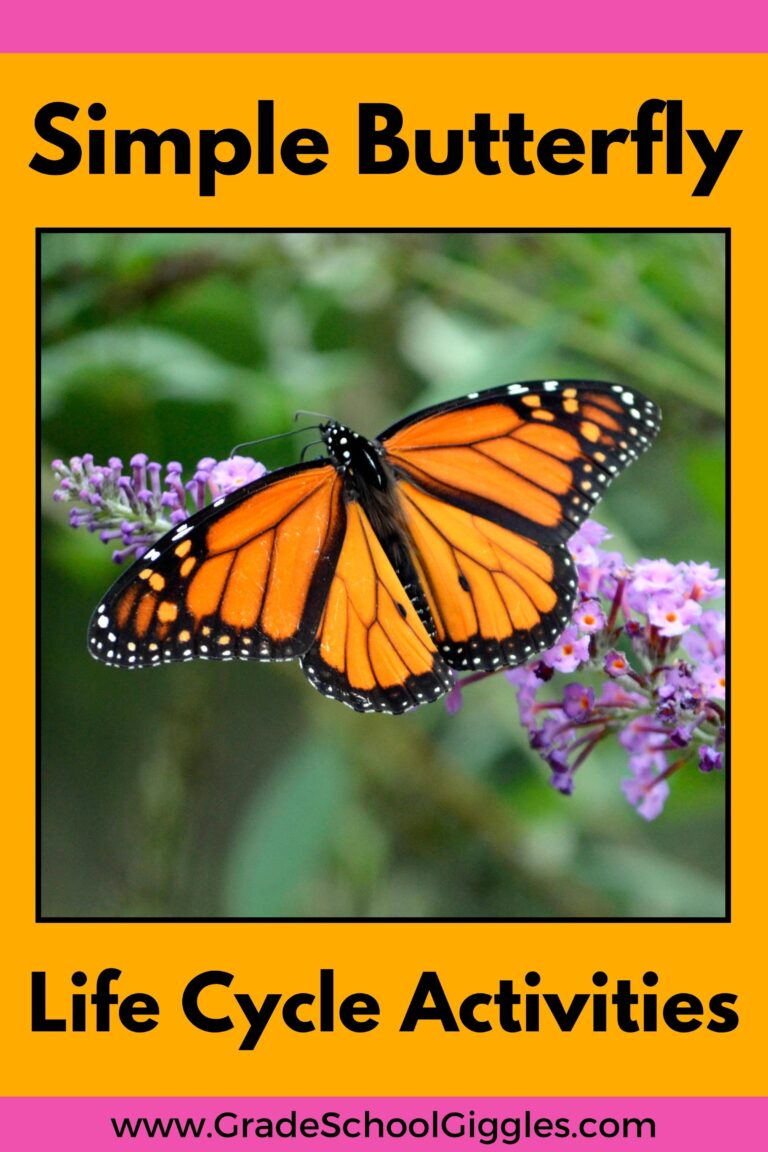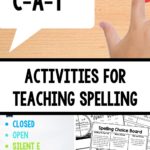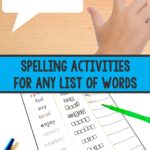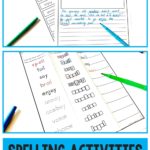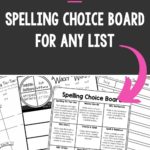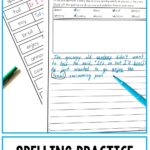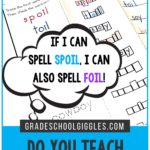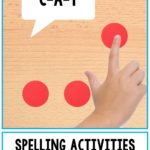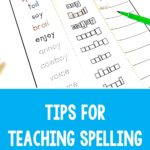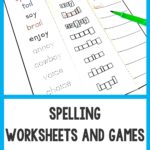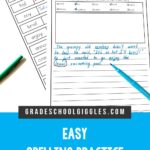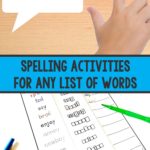Do You Dread Teaching Spelling? Try These 10 Activities For Any List!
If you’ve ever felt stuck when it comes to teaching spelling, then this post is for you. I’ll share 10 spelling activities that work for practicing any list of words.
Plus, I’m going to share tips for moving kids beyond memorization. We’ll talk about how to help them understand why words are spelled the way they are, and I’ll be sharing a free spelling choice board at the end.
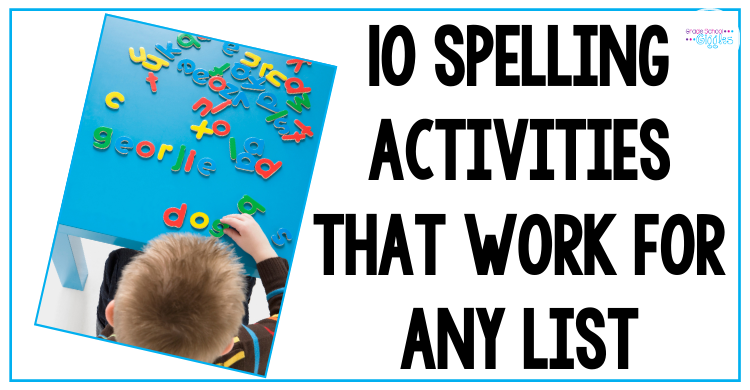
Spelling Activity 1 – Segment Words
Segmenting words into phonemes is one of the essential skills kids need for spelling. Don’t tell a kid to sound it out if they haven’t learned to segment words yet!
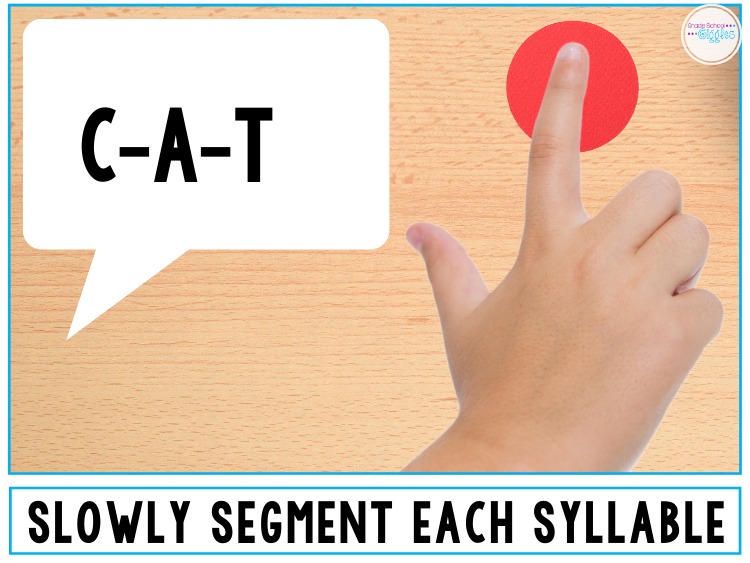
Start with 2-3 letter single-syllable words. Stretch out a rubber band as you say the word SLOWLY. Clearly pronounce each sound.
You can use kinesthetic strategies too. For example, set out several small manipulatives and slide one down as you say each sound. Another popular option is to tap a finger for each phoneme.
Once the word has been segmented, identify the letter or letters needed to spell each phoneme.
Spelling Activity 2 – Identify The Syllables
Most K-2 teachers are already teaching kids to count syllables, but we need to move beyond counting them.
We can help our students become better spellers and readers by teaching them about the 6 major types of syllables. Plus, we need to teach our kiddos how to divide words into syllables and identify the syllable types.
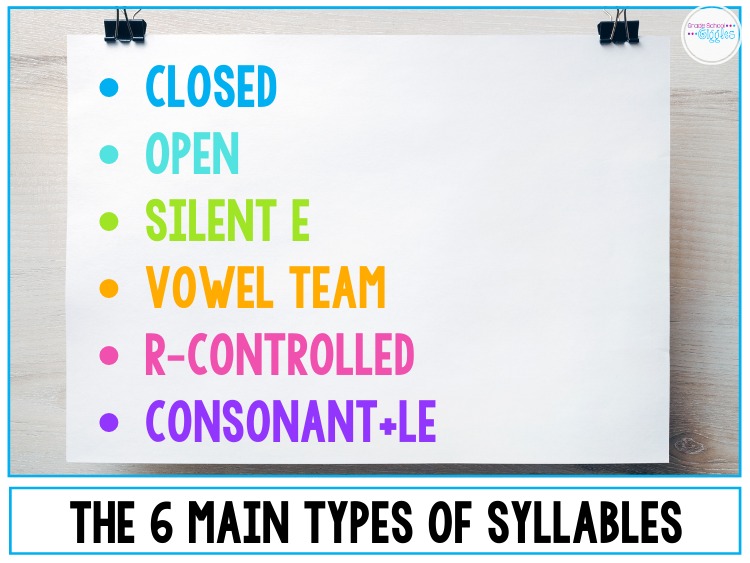
Teach kids to split longer words into syllables and then segment those syllables one at a time. Combining segmentation and syllabification will take kids a long way in spelling.
Spelling Activity 3 – Practice Phonics Patterns
Phonics is important for more than just reading. Kids need systematic and explicit phonics instruction for spelling too.
It’s tempting to think that a child who is reading well will also progress well in spelling. Unfortunately, that’s not always the case. Most kids can read more words than they can spell. We need to systematically teach kids to apply phonics patterns to spelling and not just assume their reading skills will transfer over.
Spelling Activity 4 – Learn Spelling Rules
Not all spelling rules are equal. Some are worth teaching. Others aren’t. That’s because some spelling rules apply nearly all the time, and others don’t even apply 50% of the time. It’s important to focus on high-utility rules that are useful and applicable most of the time.
An example of a high utility rule would be the idea that every syllable has at least one vowel. It’s true for the vast majority of English words. Sure, there are a few exceptions, like prism and rhythm, but it applies to most words. (Prism and rhythm are both 2-syllable words in which the second syllable consists is just the m.)
Other rules, like when two vowels go walking, the first one does the talking, have many exceptions. Just think about the words bread, eight, and guard. They all follow different phonics patterns.
Spelling Activity 5 – Practice Using Strategies
Kids need to learn how to think about spelling. Spelling is largely predictable, although it doesn’t always seem like it. Most English words are decodable, which means most of them are spelled with predictable patterns.
Kids need to be taught to split words into syllables and to segment the syllables into phonemes. Then, they need to write an appropriate spelling for each phoneme in order. Kids also need to learn to look at what they’ve written, read their writing, and see if it looks correct.
Other strategies might include using mnemonics, looking for small words, considering the meaning (for homophones), or using a dictionary.
Spelling Activity 6 – Spelling Practice Activities For Any List
In the ideal situation, every child would receive direct, systematic teaching on grade-level appropriate phonics patterns and spelling rules. Ideally, it would be followed by formative assessment and targeted instruction for any spelling errors that persist.
In reality, we can’t always individualize instruction. However, we can provide differentiated practice and reteach to correct errors that we see across multiple students.

Editable spelling activities for any list make it easy to quickly differentiate practice activities. They’re fun and can be completed independently. They can be a tool for providing sufficient practice for students who need it. They’re also an easy way to challenge more advanced students to apply the concepts learned to more challenging words.
Spelling Activity 7 – Model Generalization
Kids don’t always realize that they can use the patterns and rules they’ve learned to spell unpracticed words. We need to point it out. It can be as simple as reading a list of words that use the same pattern or rule and then pointing out that these are all words they can spell.

Perhaps you taught your kids…
- The most common spelling for /k/ is c. Try c first.
- C usually makes the /s/ sound if it is followed by e, i, or y.
- We use k at the beginning of words if the sound /k/ is followed by e, i, or y.
Even if you only used the words kid, cat, Kim, cab, and cup to teach the concept, your students should also be able to spell cob, cub, kit, and Ken.
The focus of your teaching should be on applying the concept to their spelling. It shouldn’t be about memorizing a list of words.
Spelling Activity 8 – Identify The Known Parts Of Sight Words
Have you ever heard the phrase, there are exceptions to every rule? Well, when it comes to spelling, there are plenty of exceptions.
Often the exceptions are due to patterns or rules that haven’t been taught yet. Sometimes a word’s spelling reflects its origin or its historical pronunciation. Either way, these are words that we teach as sight words.

Most of the time, your students can still predict how parts of these words are spelled based on what they’ve already learned. Pointing out the parts that they already know and the unexpected parts makes the word easier to learn.
They’ll still need to memorize part of the word by heart, but by pointing out what they already have learned, you reduce the cognitive load and make it easier to learn the word.
Spelling Activity 9 – Write And Edit
The end goal is always for your students to actually apply their spelling knowledge to their writing. We want kids to spell their words correctly in their writing and not just on their tests. That’s why we need to set expectations for editing.
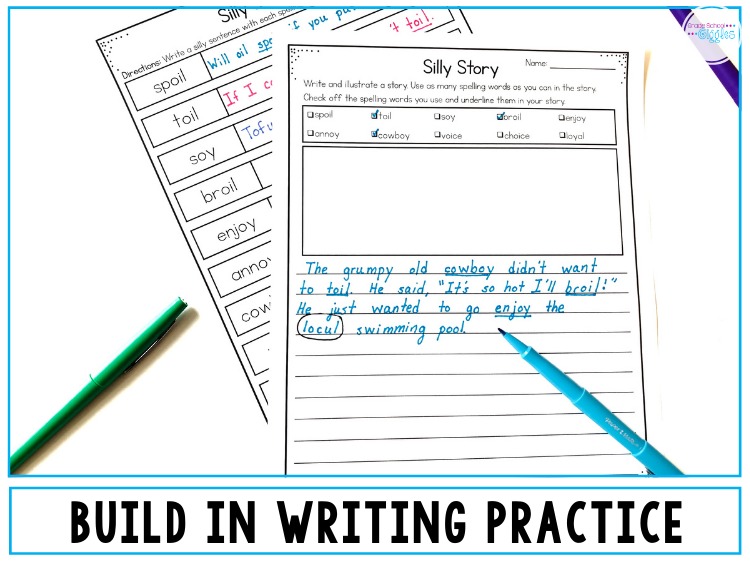
Silly sentences are an easy way to incorporate editing with your current instructional focus. Model writing a sentence and then checking your spelling. Intentionally make an error and then think out loud as you…
- Read the words out loud. Make sure to read what is written, not what you intended.
- Circle any words that look funny or that don’t look correct.
- Use scratch paper to segment those words by syllable and to try any alternate spelling patterns. See if you can figure out how to spell it.
- Use a dictionary if you get stuck.
Spelling Activity 10 – Give Students Choices
Finally, there are so many ways to practice spelling that are fun, hands-on, and engaging. Vary your practice activities. Keep it fun. Don’t let spelling turn into a series of dreaded drills.
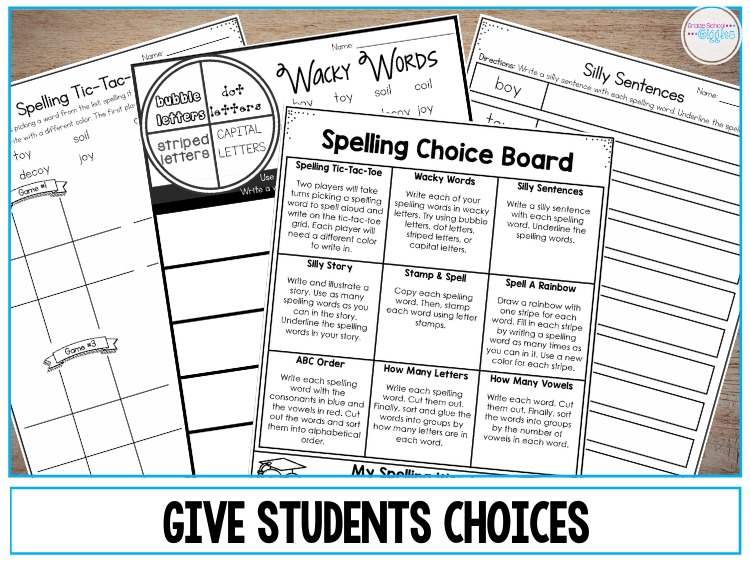
Giving students choices about how to practice their spelling words will go a long way towards keeping them engaged. Fun activities that work for any list, like magic words, code-breaking, and spelling tic-tac-toe, are popular choices.
Check out the spelling activities for any list of words from this post.
You can check out the editable sight word activities here.
You can read about more hands-on spelling activities here.
Grab a free editable choice board and add incorporate student choice into your next spelling lesson.
If you want a free copy of the choice board, sign up below. I’ll be sure to email it to you right away so you can get started today.
